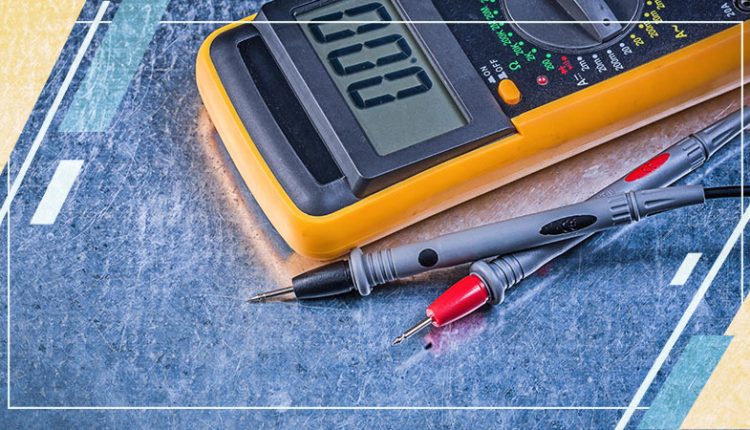Have you ever found yourself in need of precise electrical measurements on the go? In the realm of electronics and electrical engineering, precision is paramount. But how can you ensure that your measurements are consistently accurate? This is where handheld digital multimeters come into play. These portable devices are essential tools for professionals and enthusiasts alike, providing precise measurements of voltage, current, resistance, and more.
Let’s take a closer look at these handheld digital multimeters and uncover why they’re indispensable in today’s electronic landscape.
Understanding the Basics of Handheld Digital Multimeter
At its core, a handheld digital multimeter is a portable device used to measure various electrical parameters with precision. These parameters typically include voltage, current, resistance, and continuity. Unlike their analog predecessors, digital multimeters provide accurate readings displayed on a digital screen, making them easier to interpret and use.
Features and Functionalities of Handheld Digital Multimeter
Modern handheld digital multimeters come equipped with an array of features and functionalities designed to simplify measurement tasks and enhance usability. Some common features include:
- Auto-ranging: Automatically selects the appropriate measurement range, eliminating the need for manual range selection and ensuring accurate readings.
- Data hold: Freezes the display to capture readings for later reference, particularly useful when working in confined spaces or precarious positions.
- Backlit display: Illuminates the screen, allowing for easy readability in low-light conditions or dimly lit environments.
- Continuity testing: Audibly alerts users when a circuit is complete, facilitating quick and efficient troubleshooting.
- Diode testing: Checks the integrity of diodes and semiconductors by measuring forward voltage drop.
4 Reasons to Opt for Handheld Digital Multimeter
Below are four main reasons to choose handheld digital multimeters instead of benchtop models.
1. Ruggedness and portability
Certain portable Digital Multimeters (DMMs) have received certification for IP67 compliance and have been subjected to assessments ensuring their resilience against drops from heights up to 3 meters (approximately 10 feet), making them suitable for challenging work settings. The IP Code, also known as the Ingress Protection Code, is determined according to the global standard IEC 60529, outlining the level of safeguarding offered by the equipment. DMMs with an IP67 rating are designed to shield against solid particles like dust and sand while being operational for a minimum of 30 minutes when submerged in water ranging from 15 cm to 1 m depth.
Typically, handheld DMMs positioned in the mid to high-end range feature durable constructions capable of enduring rigorous environments. Conversely, benchtop DMMs are not intended for deployment in harsh conditions. As all handheld DMMs operate on battery power, they offer portability, making them ideal for utilization in remote areas lacking direct power sources.
2. High power safety and regulatory compliance
In accordance with the provided parameters, here is the paraphrased text: Handheld Digital Multimeters (DMMs) undergo testing to conform to power safety and regulatory standards. Manufacturers are obligated to indicate the rated measurement category (CAT II, CAT III, or CAT IV) on their handheld multimeters as per the IEC 61010 standard. This categorization assists users in determining the maximum transient voltage that the meter can endure safely.
Handheld DMMs are primarily used for measuring high-voltage main sources and circuits. They generally possess a higher measurement category compared to benchtop DMMs. Although benchtop DMMs also carry a category rating, they typically fall under CAT II (300 V mains). Conversely, handheld DMMs are typically rated CAT III for mains measurements and CAT IV for measurements in proximity to the mains source.
3. Isolated from power-line noise
Handheld DMMs operate on battery power and do not rely on direct connection to electrical mains. As a result, they are not susceptible to interference from power-line noise while taking measurements. Power-line noise can introduce inaccuracies in readings, particularly when dealing with delicate DC voltage measurements. A meticulously engineered benchtop DMM contains specialized elements to eliminate the impact of power-line noise.
4. Special troubleshooting features
Certain handheld digital multimeters offer practical features tailored for troubleshooting or convenience, particularly in challenging environments. These include:
- Built-in Flashlight: Facilitates navigation in dimly lit areas, ensuring visibility where lighting is limited.
- OLED Display: Delivers enhanced contrast and wide viewing angles, ensuring clear visibility both indoors and outdoors, even in low-light or off-angle scenarios.
- Harmonic Ratio Function: Aids in identifying the presence of harmonics within AC signals, enabling more comprehensive analysis.
- Built-in Frequency Counter and Square Wave Generator: Streamlines testing processes by providing additional testing capabilities within a single device.
- Contactless Voltage Sense: Enables the detection and tracing of live wires without direct contact, enhancing safety during troubleshooting tasks.
To Conclude
Handheld digital multimeters stand as indispensable assets for professionals and enthusiasts alike in the realms of electronics and electrical engineering. Their portability, accuracy, and array of features make them invaluable tools for a diverse range of applications, from electronics repair to automotive maintenance and beyond. Investing in a quality handheld digital multimeter not only enhances efficiency but also empowers individuals to tackle projects with precision and confidence. With their ability to provide accurate measurements and streamline troubleshooting tasks, handheld digital multimeters prove themselves as essential companions in any toolkit, ensuring that users can navigate the complexities of electrical systems with ease and proficiency.


